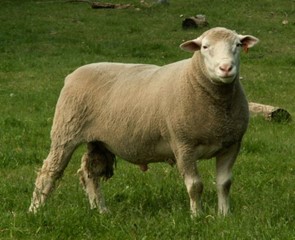Genetic Group Solutions
A fairer starting point for new genetics
The use of Genetic Groups in Signet’s Terminal Sire Evaluation
 The National Terminal Sire Evaluation delivered by Signet/EGENEs has been enhanced through the addition of a “Genetic Groups Model”; a modification to the analysis which provides new animals being performance recorded for the first time with a fairer starting point in the analysis.
The National Terminal Sire Evaluation delivered by Signet/EGENEs has been enhanced through the addition of a “Genetic Groups Model”; a modification to the analysis which provides new animals being performance recorded for the first time with a fairer starting point in the analysis.
In the past, all unrecorded sheep with unknown parents came into the genetic analysis with the same starting point for their EBVs (and thus breeding index).
In long running breeding programmes, this often meant new animals with unknown parents joined a large group of foundation animals recorded in the 1970’s and 80’s. Due to the genetic progress made in many breeds, this starting point is probably much lower than their true (but as yet unknown) genetic merit.
A better way to evaluate these individuals is to group them according to their year of birth and sex, rather than assuming they are all the same. This seems fairer, because in reality you would expect a new ram purchased in the last 2 years to be of better genetic merit than unknown foundation animals purchased 20-30 years earlier.
A Genetic Groups Model provides a good genetic solution where large numbers of sheep with an unknown sire and dam are being analysed – it is less robust when a genetic group solution only contains a few animals.
Work funded by AHDB has enabled the team at EGENES to test a number of models and propose a solution that is deemed to be both fair and robust, assigning sheep within unknown parents into groups based on their age and gender.